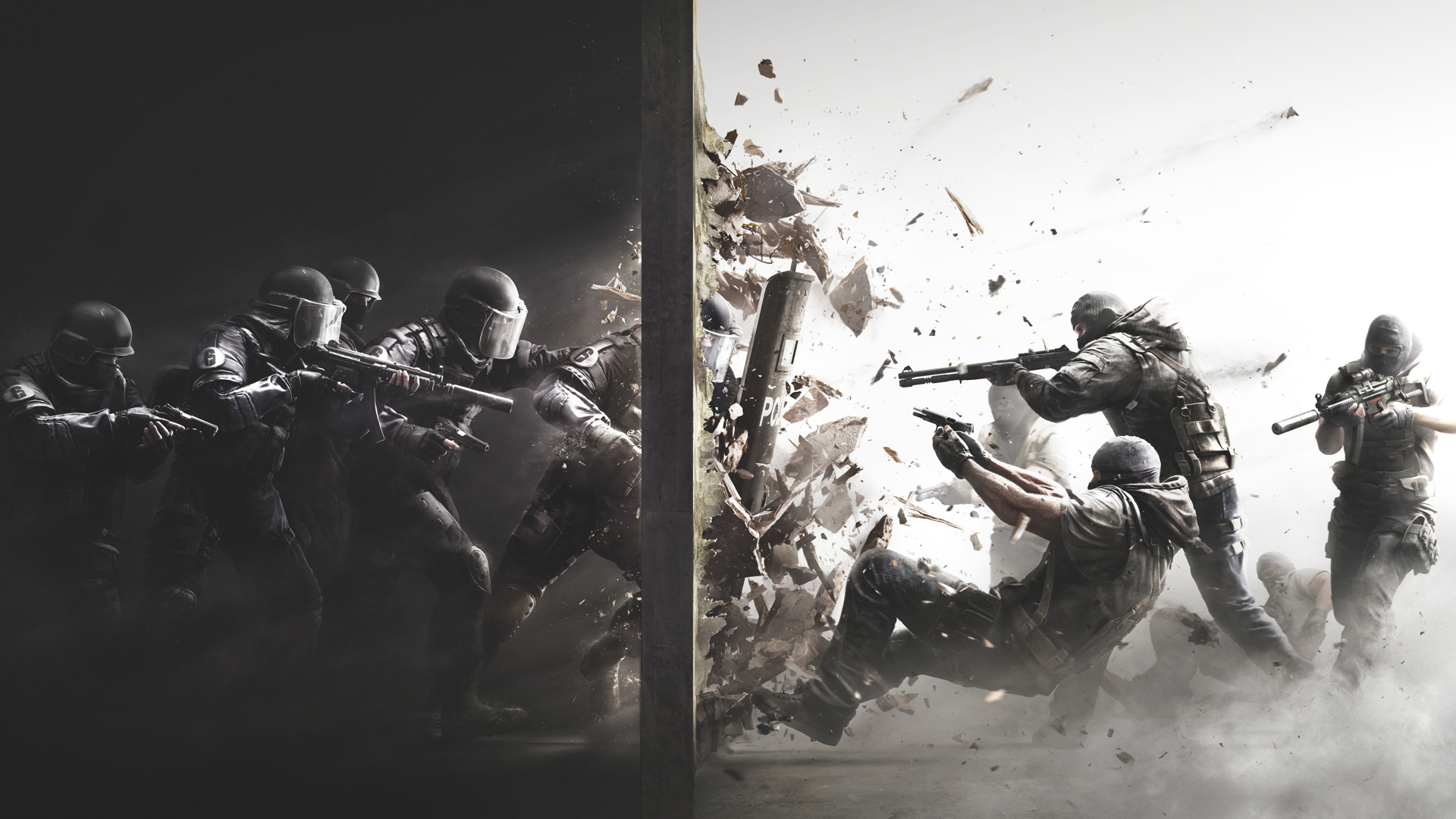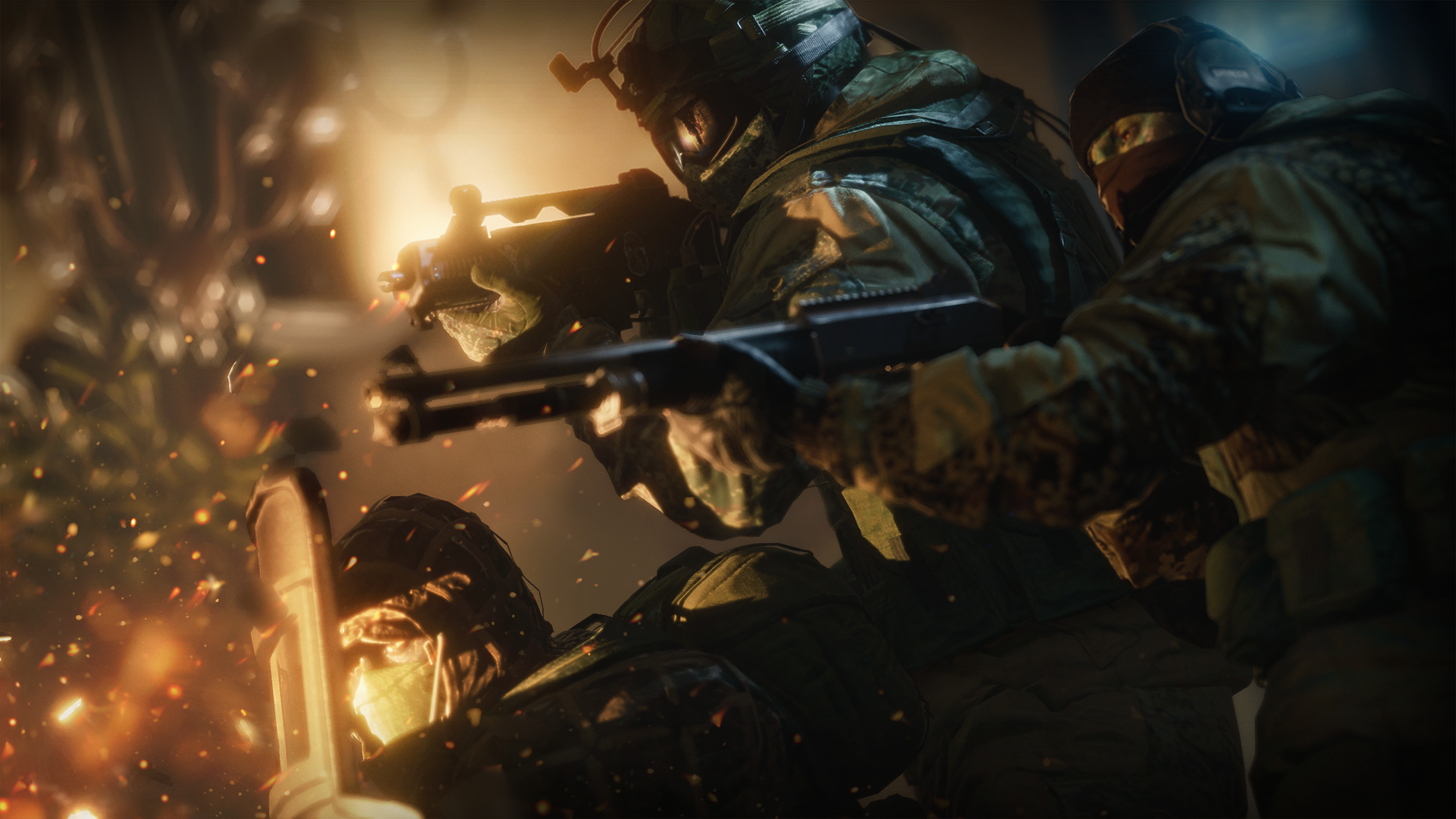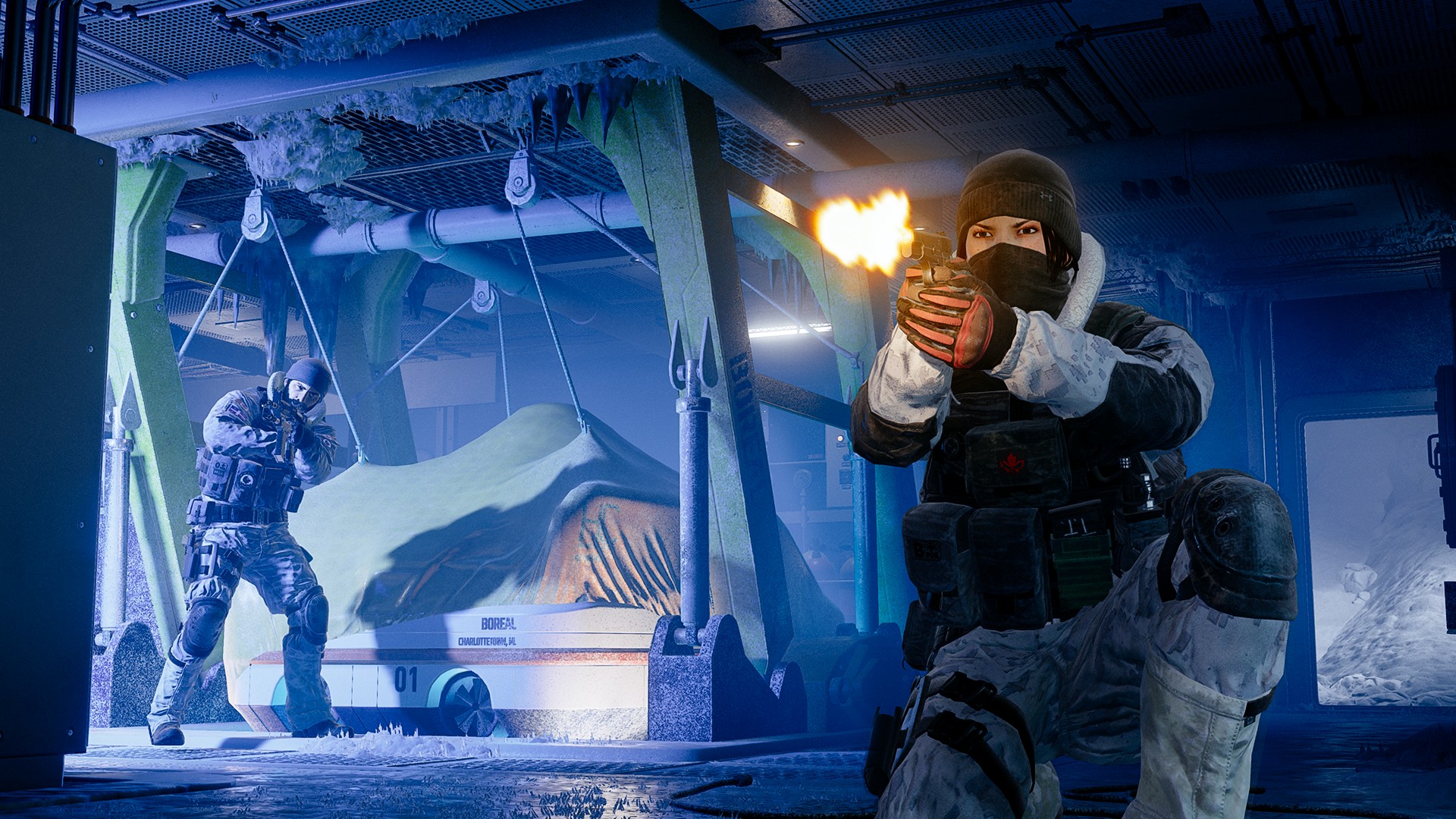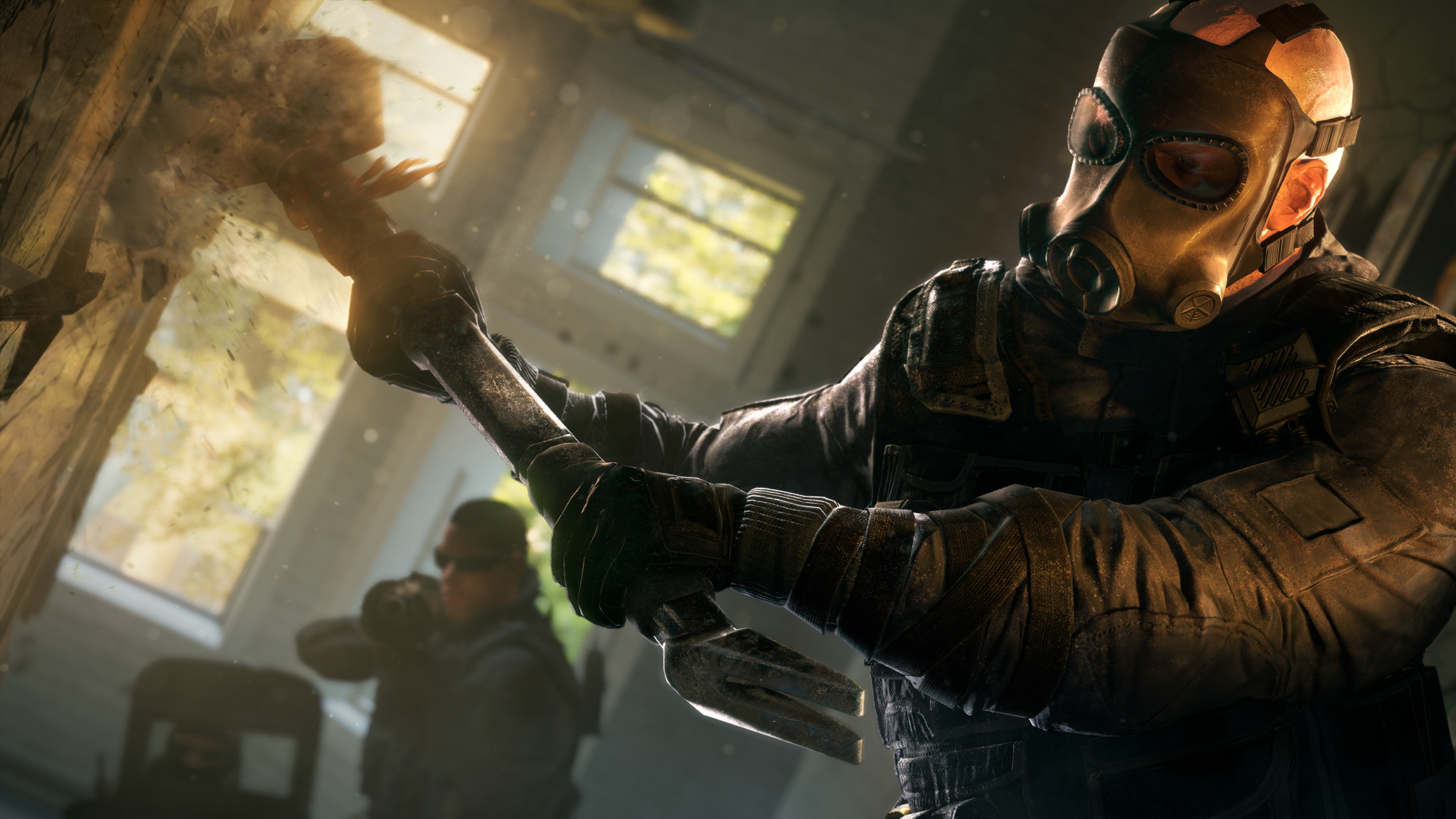Rainbow Six Siege is played by 2.3 million people every day… what's its secret?
A potent combination of free DLC, community support, and unique gameplay makes this a slice of gaming genius

For many of us, Rainbow Six Siege is a game that came and went. Though there was the standard Ubisoft marketing build-up prior to launch, some early stumbles and tepid critical reception combined with a dearth of content to shuffle Siege quickly out of the gaming zeitgeist.
But Ubisoft is nothing if not persistent, particularly when it has invested a great deal of money in a project, and in the case of Siege its doggedness has been rewarded. Ubisoft recently reported that the tactical team-based shooter has surpassed 20 million players and, even more impressively, attracts 2.3 million players every day. Every. Single. Day. For context, these are the sort of numbers usually reserved for blockbusters like Destiny or Overwatch, both of which crested around 30 million registered players.

So how is Siege doing it? How is a game that looked prime to disappear shortly after launch competing in a space crowded by the aforementioned heavy hitters, as well as the slightly more comparable Counter-Strike: Global Offensive and a glut of also ran shooters?
Relentless updates
Blood Orchid, the next expansion for Siege launching on August 29, marks its sixth large update, seventh if you include Ubisoft’s current initiative to improve connectivity and correct bugs and glitches. That’s a massive number of expansions for even the most ambitious, best MMO, and unheard of for a competitive shooter. Built into those expansions are almost 30 patches of varying size and complexity. And perhaps most impressively of all, every piece of expanded content has been absolutely free. Our own review on GR+, I'm sorry to say, simply doesn't reflect the Rainbow Six Siege players experience today because it's a very different beast to the one we played in 2015.
The steady drip of new content doesn’t just mean a greater likelihood to retain players already invested in the game, it also means there’s always something fresh to see for new and returning players. And for those who briefly dipped their toes in around the beta or launch, there’s a huge slate of new stuff to play with, from operators to gear to maps, as well as new modes and tons of new gameplay features. The new content shuttles players around the globe, from the US to the Middle East, Canada to Japan, and that international flair makes each new map feel distinctive.

Siege is a game that gets more attractive as time passes, but also continues to drop in price. If your goal is to build a massive, thriving user base, that’s a powerful combination to leverage. And in a cyclical, snake-eating-its-own-tail sort of way, a larger community means there’s always someone to play with, which is also vital for drawing in new players.
Stand-out gameplay
Even before the torrent of updates, Siege offered shooter fans an experience they couldn’t get anywhere else. Sure, there are some superficial similarities to CS: GO or to other tactical shooters, but Siege’s asymmetrical attack and defense, destructible environments, and bevy of gadgets and high-tech weapon attachments add a unique tactical layer on gameplay that can still get incredibly quick, dirty and brutal. The slow pace of methodical exploration and room-by-room advances build to moments of chaotic violence and relief.
Sign up to the GamesRadar+ Newsletter
Weekly digests, tales from the communities you love, and more
Siege offers a kind of tension and claustrophobia that other games can’t replicate, putting players in tight environments and with limited intelligence on where their adversaries are lurking. It lends many of Siege’s maps the feeling of repelling a home invasion (or staging one), an atmosphere that feels closer to The Castle Doctrine than Call of Duty.
Siege gives players an easily digestible taste of what games like Playerunknown’s Battlegrounds excels in, the tension of lying in wait for your prey or sweeping a location trying to ferret them out, but with a greater sense of control over your loadout and approach (and a heavy emphasis on teamwork). But also like Battlegrounds, these long cat-and-mouse encounters resolve in an explosive, satisfying frenzy of violence that challenges player’s abilities to react quickly and stay cool under fire.

Not only is this slow build up and violent punctuation great to play, but it’s thrilling to watch too, as you root for your team-mates from the comfort of your all-seeing death state. And don’t get me started on the adrenaline rush of being the last man-standing who takes on the entire opposition force and wins the most unlikely of victories. No other game can match such incredible underdog stories.
Community and continuity
Every online community will be plagued by its share of troublemakers and trolls; it’s the reality of living in a connected world and the increasing democratization of the internet. That said, Siege has a remarkably mature and conversational player base, a quality no doubt fostered by the necessity to communicate with your team in-game if you want to survive and succeed.
Teams that don’t talk, or that are an assembly of five players intent on going solo, are easy pickings for a disciplined team in constant contact, planning together and continually providing information about enemies’ locations and disposition. A lot of my time with Siege feels like eavesdropping on virtual SWAT strategy meetings.

Even more appealing than a surprisingly engaged community are Siege’s myriad ploys to keep players hooked. All new operators to buy, upgradeable weapons, unlockable attachments, loot boxes with skins and limited-time cosmetics... there’s always some juicy new piece of content dangling just within reach to strive towards, and for the most part it feels worth the effort to snag it.
A complete, evolving package
Siege has always had solid, engaging gameplay, and Ubisoft has wisely recognized this and not toyed with the core formula too much. Instead, the publisher has continually built on that solid foundation and supported it with more stuff, more ways to play, and a commitment to sorting out issues as they arise. It’s a great example of a grassroots community growing up around a game that the developers seem genuinely committed to supporting and updating, a meeting in the middle of the devs and the players that’s created a juggernaut that just keeps gobbling up more, new players (and generating more cash as a result). It feels like everyone wins, almost all the time, and that is why 2.3 million people play the game every single day.
Alan Bradley was once a Hardware Writer for GamesRadar and PC Gamer, specialising in PC hardware. But, Alan is now a freelance journalist. He has bylines at Rolling Stone, Gamasutra, Variety, and more.



